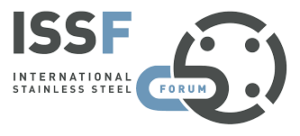JAPAN: GDP contracted by 0.2% in Q1 for the first time in nine quarters, but this is not expected to continue. Stainless steel supply and demand is 2.85 million tonnes. This is 0.4% up. Imports have surge by 17.3% whilst exports have shrunk. Apparent consumption is at the highest level in 10 years. Consumption is expected to increase, however there are concerns over trade issues, making the future difficult to predict.
EUROPE: Economies are strengthening within both developed and developing regions. Since 1950, CAGR has been at 5.9% and showing 7.1% in the last decade. There should be an improvement in real demand but trade barriers will lead to increased volatility.
SOUTH AFRICA: The political situation has improved. It is hoped that this will translate into an improved economic climate followed by improvements in consumption. No further shrinkage is predicted.
USA: Steady growth is seen going forward, particularly in the transport and energy sectors.
MALAYSIA: Growth continues at a rate stronger than the growth in GDP. Trade barriers are a concern, as well as the situation in China with regard to consumption and prices.
BRAZIL: Some recovery is seen but it is fragile. Societies are adopting the circular economy.
KOREA: The current 3.0% growth is set to continue. There is risk but it is seen as decreased in terms of geopolitical uncertainty on the Korean peninsula between the north and south. Other concerns are trade barriers and rising household credit. Consumption is flat. Car production is 1.4% down. Ship building is yet to recover. Manufacturing is shifting to overseas sites and there is falling domestic demand. They are looking at new stainless-steel applications.
INDIA: Following 2017 tax reforms, more taxes were introduced and the GST increased. The business climate has therefore eased. Tax revenue is improving but has had a disruptive effect on economic growth from 7.0% down to 6.7% last year. This has had a positive effect on stainless steel consumption, but growth has moderated to 5%. Railway coaches are being replaced with stainless steel (60 000 coaches) and the emergence of smart cities is also driving demand.



